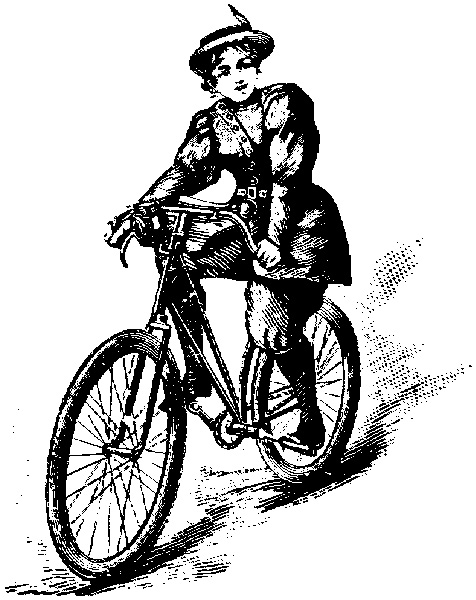The Liberating Wheel

The Vassar campus is an ideal bicycling community. Its bucolic setting, paved paths, and a widely dispersed collection of bicycle racks beg students, faculty, and visitors to take advantage.
Around the turn of the 20th century, however, bicycling was just beginning its storied history, both on campus and around the world. According to Louise Fargo Brown’s Apostle of Democracy: The Life of Lucy Maynard Salmon, Vassar’s renowned history professor owned the first bicycle on campus—she had brought it across the Atlantic following a summer trip to Europe.
James Monroe Taylor, who served as Vassar’s president during Salmon’s tenure, wasn’t keen on the notion of “wheeling” women. He found the sight of a woman riding a bicycle as undignified as the “abhorrent” split skirts (or bloomers) and high boots they wore while riding them. Brown notes that Salmon and Taylor butted heads repeatedly—over this and other issues.
Taylor wasn’t the only one concerned. Widespread criticism centered on the reputed negative effects—social and physical—for women who wheeled. An 1895 edition of the Philistine noted that the Boston Woman’s Rescue League, which provided shelter and “moral guidance” to troubled young women, was against bicycling by women. The organization, it reported, had made “the startling discovery that ‘thirty percent of the girls that have come to the Rescue League for aid were bicycle riders at one time.’ Probably one hundred percent of the same were innocent girls at one time.”
Other published articles concerned the sexually stimulating nature of bike riding. Manufacturers designed “hygienic” and “anatomical” saddles that removed the middle of the saddle, leaving no place for friction on the female genitalia. An advertisement for the Duplex Safety Saddle promised, “Under weight of rider, it hollows out like a chair. No pressure on sensitive parts of the body.”
Despite the opposition, women were some of the most ardent adopters of the bicycle in the 1880s and ’90s. It allowed them the freedom to travel beyond their neighborhoods, the ability to gain much needed exercise, and the chance to enjoy the thrill of a bicycle’s speed.
However, one of the most significant consequences of the new mode of transport—and one many women enjoyed—was the subsequent change in women’s fashion. Bustles and corsets were exchanged for more comfortable apparel, like the bloomers President Taylor hated. And those fashion changes led the way to fewer restrictions in clothing for everyday wear.
It’s not hard to imagine, then, why Salmon embraced the controversial bicycle. She was a rebel in her day and a strong proponent of women’s rights. The history professor never shied away from causes she believed in—even if they involved a two-wheeled contraption.
